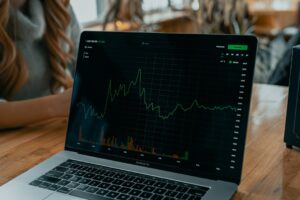The foreign exchange market, also known as forex, is the largest and most liquid financial market in the world. With trillions of dollars being traded every day, it offers numerous opportunities for investors to make profits. However, the forex market can be highly volatile and unpredictable, making it challenging for traders to consistently make successful trades. This is where automated trading strategies and forex programming come into play.
Automated trading strategies, also known as algorithmic trading or trading robots, are computer programs that execute trades on behalf of traders. These programs use predefined sets of rules and algorithms to analyze market data and make trading decisions. By automating the trading process, traders can eliminate the emotional aspect of trading and take advantage of market opportunities 24/7.
Forex programming is the process of creating, testing, and implementing these automated trading strategies. It involves coding the trading rules and algorithms into a software program that can communicate with the trading platform. Forex programming languages like MetaQuotes Language (MQL) and Python are commonly used for this purpose.
The importance of forex programming for automated trading strategies cannot be overstated. Here are some key reasons why it is crucial for traders to have a solid understanding of forex programming:
1. Customization: Every trader has unique trading preferences and strategies. Forex programming allows traders to customize their automated trading strategies according to their specific needs. They can define their own trading rules, risk management parameters, and indicators to be used in the strategy. This level of customization gives traders the flexibility to adapt their strategies to different market conditions and improve their chances of success.
2. Backtesting: Before implementing an automated trading strategy in a live trading environment, it is essential to test its performance using historical market data. Forex programming enables traders to backtest their strategies by simulating trades on past data. This allows them to evaluate the profitability and reliability of the strategy before risking real capital. By identifying and fixing any flaws or weaknesses in the strategy during the backtesting phase, traders can significantly improve their chances of success in live trading.
3. Optimization: Forex programming also allows traders to optimize their automated trading strategies. Optimization involves fine-tuning the strategy’s parameters to maximize its performance and profitability. By systematically varying the parameters and running multiple backtests, traders can identify the optimal values that yield the best results. This process helps traders to fine-tune their strategies and increase their chances of generating consistent profits.
4. Execution Speed: In the fast-paced world of forex trading, every second counts. Forex programming enables traders to create strategies that can execute trades within milliseconds, ensuring they don’t miss out on profitable opportunities. By eliminating manual intervention and automating the trading process, traders can take advantage of market movements instantly.
5. Risk Management: Successful trading is not just about making profits; it is also about managing risks effectively. Forex programming allows traders to incorporate risk management techniques into their automated trading strategies. They can set stop-loss orders, take-profit levels, and position sizing rules to control their risk exposure. These risk management features help traders protect their capital and minimize losses during adverse market conditions.
6. Continuous Improvement: The forex market is constantly evolving, with new trading patterns and strategies emerging regularly. Forex programming empowers traders to stay ahead of the curve by continuously improving their automated trading strategies. They can incorporate new indicators, modify existing rules, or develop entirely new strategies based on changing market conditions. This adaptability and continuous improvement are crucial for long-term success in forex trading.
In conclusion, forex programming plays a pivotal role in the development and implementation of automated trading strategies. It provides traders with the tools and flexibility to customize, backtest, optimize, and execute their strategies effectively. By leveraging the power of automation and technology, traders can increase their chances of generating consistent profits in the highly competitive forex market. Therefore, understanding forex programming is essential for any trader looking to succeed in automated trading.






